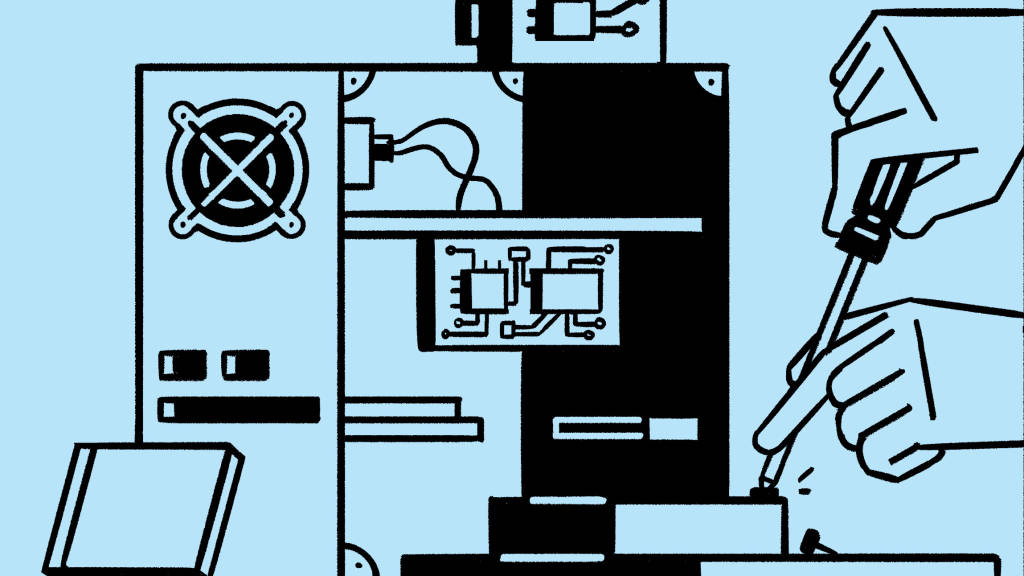The Race to Digitize
With data business driving growth, IT professionals are coming out of the basement to get involved in projects as upfront problem-solvers in highly agile teams.
Data is the new oil. The race to digitize is well underway and the companies that figure out how to win will be more profitable and able to make faster, strategic decisions.
“Every business will become a software business,” Microsoft CEO Satya Nadella told his company’s annual Convergence Conference.
That was in 2015 and, in typical digital speed, much has happened since then. Amazon delivered a package by drone. SpaceX landed a rocket vertically in the ocean. Artificial Intelligence, digital storage and hyper-speed mass transportation all lept forward.
Recent research from Harvard Business Review Analytic Services in partnership with Microsoft reports 84 percent of respondents have either already had their industry disrupted by digital trends or will by 2020. In less than three years, nearly half believe their traditional business model will be obsolete. Yet, most organizations are still forming digital strategies. According to The Case for Digital Reinvention, a report by McKinsey, less than 40 percent of industries are digitized. The race has really just begun.
“The most successful companies will not only have access to data – market, customer, operational – but they’ll derive unique, actionable insights from that data to help them better serve customers, improve business operations and transcend current business models,” says Rimes Mortimer, general manager of applied innovation at Microsoft.
As leaders accelerate the digital transformation of their organizations, those who want to compete are rethinking the role of the information technology (IT) team, and fostering a new set of skills and behaviors. Companies are looking to build a degree of agility, creativity and responsiveness not previously demanded.
Transforming it
“Information technology as we used to know it is dead,” says Luis Palacios, technology director at Cisco Spain. “It’s all about people, helping people transform, use and consume technologies in a natural and transparent manner.”
Forget the “factory farms” of IT professionals with their heads down at a single workstation fixing a piece of code, or IT departments in the basement next to the servers they’re required to protect. Now, IT is driving business growth. They are analyzing patterns within data, extracting insights, communicating, pitching and planning future projects. They are highly adaptable and flexible.
“As digital transformation takes shape, business leaders must rethink how to empower employees.”
Rimes MortimerGeneral Manager, Applied Innovation, Microsoft
“Instead of being there at the end when the problem has been identified and the plan has been created, we’re getting involved in the upfront design thinking. What problem are we trying to solve? What customer are we trying to help? That really changes the skillsets you need to be successful,” says Terry Lenhardt, CIO at Steelcase.
Now, there’s a need for more than traditional technology skills. Information technology teams need communicators, collaborators and creators. People need to have emotional intelligence to empathize and respond to a customer. The fervor to attract and keep this topgrade talent is greater than ever as competition in the digital realm grows exponentially.
“Digital transformation at its core is business transformation enabled by IT,” says Mortimer. “Finding the intersection of business and technology will turn the modern IT pro into a ‘chief collaborator’ working across many groups.”
The Journey to Agile
These new teams will need to work in new ways as well. Many technology development groups have already adopted “Agile Software Development”—drastically changing the old ways people would get work done. A collection of software developers first applied the term “Agile” to a collection of methodologies in 2001. The Manifesto for Agile Software Development expresses 12 principles designed to help teams create and respond to change in an ever-changing environment. Agile is a set of methods where solutions evolve through collaboration between empowered, cross-functional teams.
Instead of a team working on a project for years or even months, and then delivering a perfect solution to the customer, Agile is customer-centric. It involves a rich, empowered team that learns with their customer producing incremental effectiveness, incorporating feedback and delivering iterative work quickly.
Customers today expect fast development and frequent updates—just look at your smartphone: its software updates every few months. Cisco’s Palacios describes an example of Agile development:
“In the past, we might wait for 20 features to be created before delivering a product. Now, we start with what we need tomorrow. For example, we may decide we need to make a phone call over the internet. We might start with audio and one ‘call’ button, launching it in 15 days. We put it into the market, receive feedback and begin working on the next stage simultaneously. Revenue begins right away and we get to design the next feature using customer feedback.”
When you’re used to spending years getting the details just right, Agile is a drastic shift in behavior. It’s about people swarming a problem, and requires an interactive team. Agile’s ideal state has people working physically in the same space so speed isn’t compromised and learnings are easily shared. Projects can’t stand still waiting for an email response, a return call or for someone to get back from vacation. The Agile process is an organic, collective journey where work is visible and transparent.
“It’s a meld of culture, human resources, facilities and technology,” says Palacios. “It has to be done together. If you buy our technology and that’s it, people might not use it. You have to offer them the right culture, right affordances and right spaces to use it.”
Palacios says people need different spaces depending on how they need to work at the moment. They may need a place for a big team conversation, or a two-person space where they can display technology. They may need time alone to concentrate, or time with their small group to iterate.
Mortimer agrees. “As digital transformation takes shape, business leaders must rethink how to empower employees to support the cultural and workforce shifts digital transformation brings. The process starts with designing a workplace where every work style can thrive – one that harnesses digital intelligence to improve experiences and enables the flexibility of mobility, while keeping the organization, people and information secure.”
It’s something Lenhardt is thinking about as well. With the mix of highly desired skills sought for today’s global work environment, people are looking for spaces that perform — places that help them work at their very best. These workplaces should be inviting and inspiring as well, because every company is now competing with the likes of Silicon Valley for top tier talent.
“More and more, how do you put a team together and give them control over their space so they can have some flexibility to have the space work for them, depending on the problems they’re trying to solve?” says Lenhardt.
There’s a lot to consider. But, the stakes have never been higher for those that get it right.
How is data leading to dollars?
Here’s a few examples from companies getting it right.
1. La Liga
Spain’s top professional soccer league broadcasts to a weekly audience of 2.1 billion. Artificial intelligence and cloud services allow La Liga fans to specify their favorite teams and players, and then access only the content, videos and statistics that matter most to them.
2. Tetra Pak
Service engineers at the packaging giant use HoloLens headsets to more quickly diagnose and fix machine issues, even remotely. Digital tools and cloud-connected machines predict equipment maintenance needs and avoid costly breakdowns.
3. Delta Air Lines
The airline is using a mobile strategy by starting to equip its 19,000 flight attendants with mobile devices, increasing incremental revenue from in-flight purchases.
4. Boeing
Asset tracking technology keeps tabs on billions of small parts. Tags on every part labeled “valuable” allow an object’s exact position to be located. Boeing is saving money and time looking for lost parts.
5. General Motors
Remote monitoring alerts factory workers before a problem happens. Monitoring, diagnostics and proactive maintenance reduce downtime that can cost automakers anywhere from $15,000-50,000 per minute, according to Nielsen.
6. NBA
Sensors on the ball and each player allow NBA coaches and players to analyze which plays are most successful.
7. City of Chicago
More than 600 data sets can help the city predict, prepare and solve problems in real-time in emergencies or for a big planned event.
8. Copenhagen
Increased convenience and reduced congestion with realtime lighting and parking management. Reduced the use of CO2 emissions with a connected city infrastructure.
9. University of British Columbia
Linked Wi-Fi analytics with building control systems to lower gas emissions 33 percent and create 5 percent energy savings equating to $200,000-400,000 annually.
10. K-Opticom
Japanese company uses next-generation policy and subscriber management solutions to offer data service plans as low as one-third the cost of competitors’ plans.






